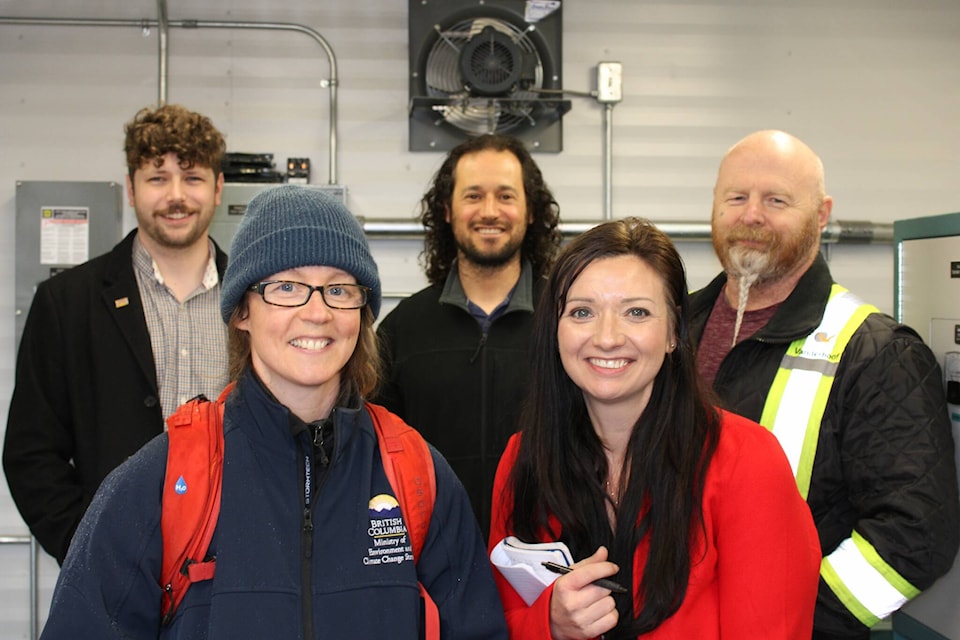The B.C. Ministry of Environment and Climate Change Strategy is partnering with the district of Vanderhoof to deploy a group of air quality sensors around the community to identify air quality ‘hotspots’ and ‘coldspots.’
Ben Weinstein and Vickie Irish, air quality meteorologists with the ministry were in Vanderhoof on Monday (April 25) to install the sensors.
Currently air quality measurements are taken at the courthouse in downtown Vanderhoof. The new sensors will cover a wider area including one at the Airport.
Weinstein said Vanderhoof is similar to other communities in northern B.C. looking for ways to deal with a mix of pollutants that hurt air quality. “The ministry of environment is implementing these kinds of programs in communities that need it,” Weinstein said.
He said Vanderhoof is a “red-zone community” from the perspective of the Canadian ambient air quality standards for particulate matter harmful to human health.
The Purple Air small citizen science air quality sensors measure extremely small particles (under 2.5 micrometers) in the air caused mostly from combustion sources that go deep into your lungs when you breathe. There will be 14 sensors in the Vanderhoof network.
“The ministry of environment has done this in a number of communities including recently in Smithers. That was a network I worked on developing. Based on the success of that I felt good about rolling it out to other communities across northern B.C., Highway 16,” Weinstein said.
“The idea is to gain information and then use that to target actions on improving air quality in the areas where we need to.”
He said the Smithers sensors are already bringing home a wealth of data that the municipality can use to address air quality.
“We’re seeing areas that have higher levels of particulate matter and areas that don’t and that’s the intent of the network. It’s very informative. You can go in real time and particulate matter levels within the community and you can identify little sources,” Weinstein said.
“Sometimes they are residential wood stoves, sometimes it’s industrial sources and sometimes when there’s a forest fire you can see everything light up at the same time.
“Vanderhoof is like many communities that struggle with how to deal with, find solutions and come to terms with the different kinds of sources they have.”
Sensors will also be installed to measure air quality around Houston and surrounding areas.
READ MORE: Vanderhoof wood pellet plant to double emissions with new expansion
READ MORE:Southern B.C. Interior cities have worst air quality in Canada
Do you have a comment about this story? email:
michael.willcock@ominecaexpress.com
Like us on Facebook
